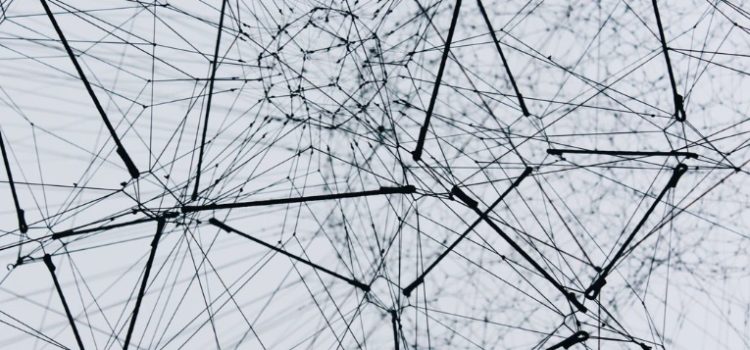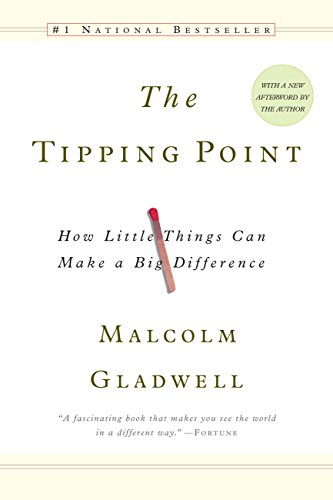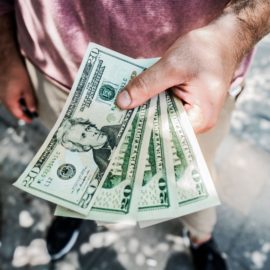

This article is an excerpt from the Shortform summary of "The Tipping Point" by Malcolm Gladwell. Shortform has the world's best summaries of books you should be reading.
Like this article? Sign up for a free trial here .
What is the “network effect”? How does it work? What impact does the network effect have on how you spread your fabulous ideas?
The network effect is the theory that, in some cases, the number of users of a good or service affects the value of that good or service. According to the network effect, the more users, the higher the value of the service or product.
We’ll cover how the network effect works and how we’ve become so overwhelmed by the various networks available to us that we’re starting to become immune to them.
The Network Effect and The Rise of Immunity
In the Age of Information, we have access to people and information via so many different forums — traditional media like print, television, and radio as well as digital media, from messaging apps to emails to websites to social platforms. Epidemics rely on this kind of interconnectedness in networks to spread diseases, ideas, or products.
Network Effect Example
The importance of networks is explained in the law of plentitude, also known as the network effect or the “fax effect,” which says that the first fax machine was essentially worthless because no one else had a fax machine to receive your fax. The second fax machine made the first more valuable, and every subsequent fax machine sold made each one increasingly valuable because they expanded the network of people with whom you could exchange faxes; each additional participant adds to the value of the network as a whole. In a network, plentitude creates power and value, which is contradictory to the rule of supply and demand that limited supply makes something more valuable. This is the theory of the network effect.
When the Network Effect Doesn’t Describe Reality
However, once the network effect and that plentitude passes a certain threshold, a large network can also lead to the fall of an epidemic. In the case of a virus, you may catch a flu that’s going around and then you develop an immunity to it; the flu can spread like wildfire, but once enough people have immunity, it has reached its natural end. (Shortform example: In the case of a social epidemic, a particular fashion trend may start among SoHo trendsetters and then is translated and spread to a larger, mainstream audience. But by the time the look is being replicated at JC Penney, it has been played out and lost its appeal not only to the trendsetters but even to the fashion-aware mainstream. The epidemic is over. This is an example of when the network effect doesn’t hold.)
Technology is creating an ever-expanding network, and people’s increasing interconnectedness is leading us to become immune to all the information and communication we receive. At a certain point, all that information becomes white noise and it is difficult for any one thing to grab our attention. And if you’re trying to start an epidemic, how do you make your message stand out from all that commotion? How do you tap in to the network effect?
This makes the Law of the Few even more critical, because people’s response to information overload is to limit their focus to trusted sources, like Mavens, Connectors, and Salesmen.
Connectors: Social Butterflies
In order to create a network effect and take advantage of it, you need Connectors, Mavens, and Salesmen.
Connectors are people who seem to know everyone. You can find Connectors in every walk of life; they are sociable, gregarious, and are naturally skilled at making — and keeping in contact with — friends and acquaintances.
Connectors tend to be connected to many communities — whether through interests and hobbies, jobs that cause them to work with people in other fields, or other experiences. Their strength is in occupying many different worlds, and bringing them together. They’re key in creating a network effect.
However, Connectors are not close with all their connections. In fact, Connectors’ power is in having lots of acquaintances, or “weak ties.” Your acquaintances typically have different social circles and communities — exposing them to different people and information — than you, whereas your friends’ knowledge and social ties tend to largely overlap with your own. Thus, your friends can help spread a message in the same communities you occupy, but weak ties can help spread that message beyond your reach because they belong to different worlds than you do.
For this reason, weak ties are more valuable than close friends in creating a wider reach for spreading epidemics, and Connectors are the hubs at the center of all those worlds.
Mavens: Data Banks
While Connectors are people specialists who know many people and can spread information widely, Mavens are information specialists; they are endlessly curious and adept at gathering and retaining information on a wide variety of (sometimes obscure) topics.
A Maven’s influence is in the power of her recommendation. People know that Mavens are knowledgeable and trustworthy sources of information, so a Maven’s word carries a lot of weight. If a Maven suggests you check out a budding epidemic, you’re inclined to listen.
Mavens also love to share their knowledge with other people, and are socially motivated to help people with the information they’ve gathered: A Maven is the kind of person who not only clips coupons and knows when a store is having a sale, but also shares coupons with her friends. Mavens are also key to taking advantage of a network effect.
Mavens’ genuine helpfulness inspires more trust and credibility — people know Mavens have no agenda or ulterior motive — so when they give recommendations people tend to take them more seriously. In a social epidemic, they serve as data banks — they carry the message, with authoritativeness.
Salesmen: Persuaders
Salesmen are the people who pitch the idea or message behind an epidemic and persuade people to jump on board. They do not merely store and share information; Salesmen want to convince you to follow their advice. Their word can create a network effect.
Salesmen have the right words plus an inherent energy, enthusiasm, charm, and likability that makes people want to listen to them. Plus, Salesmen instinctively know how to use nonverbal cues to reinforce their power of persuasion.
———End of Preview———

Like what you just read? Read the rest of the world's best summary of "The Tipping Point" at Shortform . Learn the book's critical concepts in 20 minutes or less .
Here's what you'll find in our full Tipping Point summary :
- What makes some movements tip into social epidemics
- The 3 key types of people you need on your side
- How to cause tipping points in business and life






